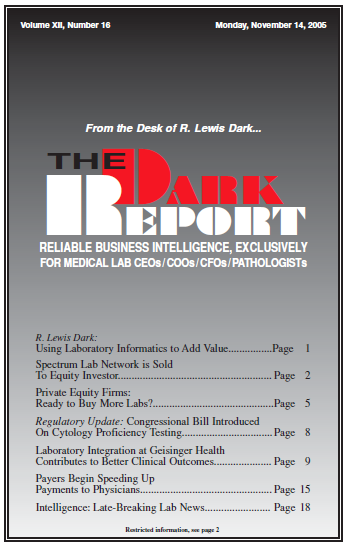CEO SUMMARY: Labs and pathology groups have always found it tough to bill patients and collect a high proportion of those obligations. That situation is about to change, and fast! Payers recognize that, as more consumers are required to pay higher deductibles, co-pays, and out-of-pocket expenses, they will have to offer physicians and other providers …
Payers Begin Speeding Up Payment to Physicians Read More »
To access this post, you must purchase The Dark Report.


